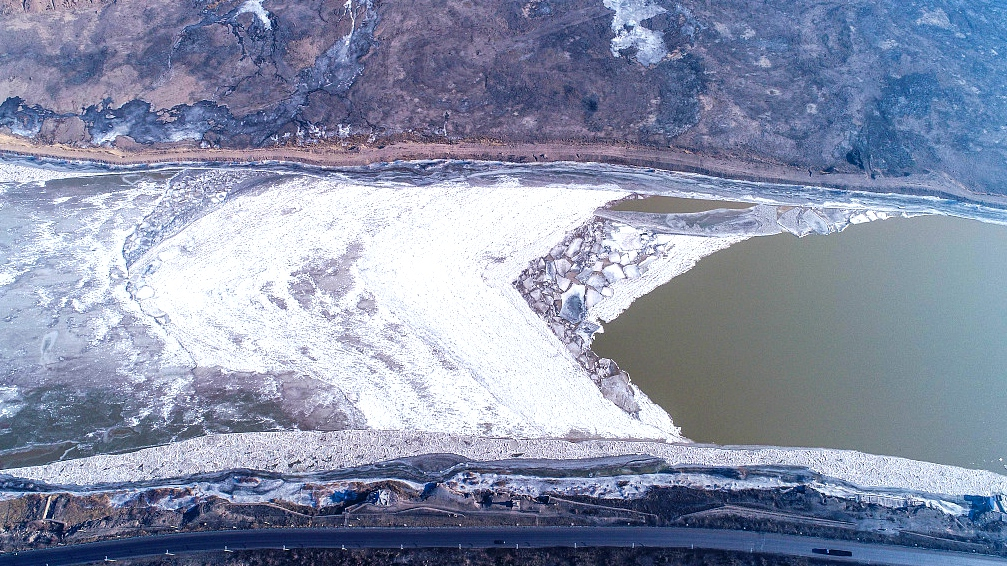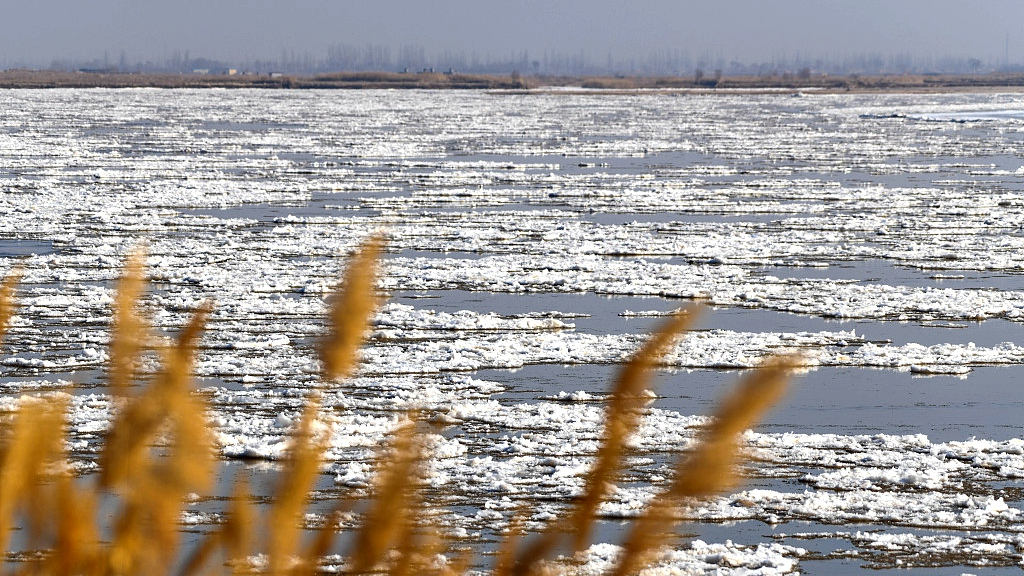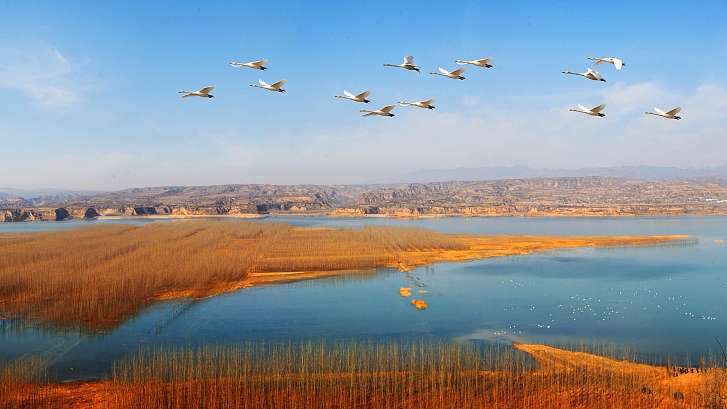
Earth
20:32, 31-Jan-2019
Early ice melting on Yellow River a sign of global warming
CGTN
01:24

The Yellow River, the second longest river in China, has started melting in sections located in northwest China's Ningxia Hui Autonomous Region. According to the local water affairs bureau, the melting is happening 10 days earlier than previous years, and is due to the rise in temperature.
According to the 2018 blue book on China's climate change, China is in a sensitive area for global climate change. From 1951 to 2017, the average land surface temperature in China has increased an average of 0.24 Celsius every decade. And the temperature increase has shown a distinctive difference from regions. The temperature growth in the western part of China surpasses the east, and the Qinghai-Tibet Plateau temperatures have risen the fastest.
The Yellow River originates in the Bayan Har Mountains in Western China's Qinghai Province. It passes through seven provinces and two autonomous regions from west to east, they are Qinghai, Gansu, Ningxia, Inner Mongolia, Shaanxi, Shanxi, Henan, and Shandong.

The Yellow River in the reach of northwest China's Ningxia Hui Autonomous Region. /VCG Photo
The Yellow River in the reach of northwest China's Ningxia Hui Autonomous Region. /VCG Photo
"The rising temperature has caused the ice melting on the Yellow River in Ningxia. The ice has been melting on a stretch of the river for about 15 kilometers, with the rest 91 kilometers still frozen," said Jia Huarong, deputy director of the water affairs bureau in Pingluo County of Ningxia.
The Yellow River is known as the “Mother River of China.” It also plays a vital part of the ecological system alongside the river basin. The conservation of the Yellow River ecosystem is the main task for China as it deals with problems such as water shortage and pollution.
The environment along the Yellow River basin has been greatly improved under the efforts of many generations of people. This year, a large number of migrant birds such as swans and geese fly over to Yellow River wetlands to spend their winter.

Swans fly over Yellow River wetland in central China's Henan Province. /VCG Photo
Swans fly over Yellow River wetland in central China's Henan Province. /VCG Photo
However, the Yellow River is still facing other challenges due to global warming. A study published by Yongnan Zhu from State Key Laboratory of Simulation and Regulation of Water Cycle in River Basin indicates a reduction in water resources in the early and mid 21st century, and an increase of extreme flood events after 2080.
The whole section of the Yellow River in Ningxia is expected to melt completely in early March. Jia said the local flood control department has been monitoring the ice melting situation to keep the risks of floods under control.
Climate change is a global environmental issue. China has developed measures for the Yellow River basin to cope with climate change, but at the global level, it needs the public's involvement.

SITEMAP
Copyright © 2018 CGTN. Beijing ICP prepared NO.16065310-3
Copyright © 2018 CGTN. Beijing ICP prepared NO.16065310-3